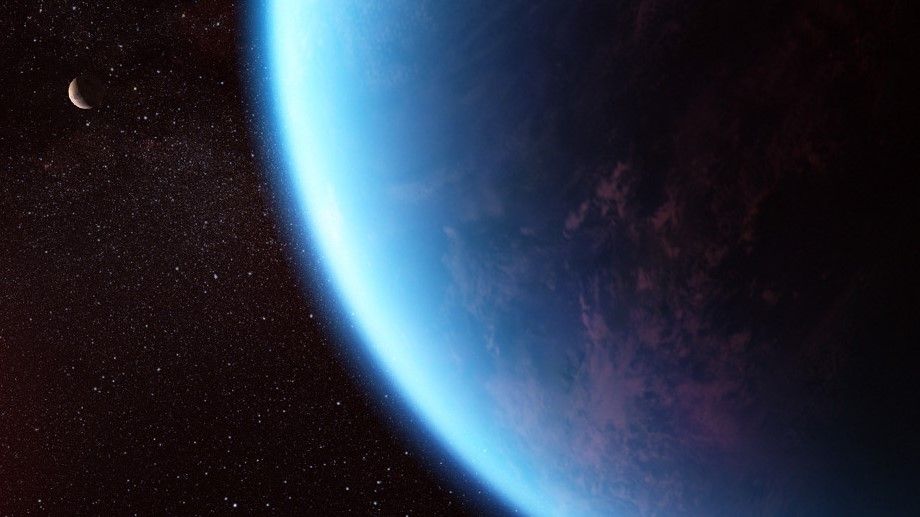Science
Related: About this forumExoplanet's surface may be covered in oceans, James Webb Space Telescope finds
By Robert Lea published about 12 hours ago
The so-called Hycean planet K2–18 b is around twice the size of Earth and orbits in the habitable zone of a star located 120 light-years from our solar system.

An illustration of the exoplanet K2–18 b, which dwells in the habitable zone of its star and is now known to have carbon-based molecules in its atmosphere. (Image credit: NASA, ESA, CSA, Joseph Olmsted (STScI))
The James Webb Space Telescope (JWST) has discovered evidence of carbon-based molecules in the atmosphere of a suspected ocean world.
The extra-solar planet or exoplanet known as K2–18 b is a tantalizing target for astronomers as they search for life beyond the solar system, as previous research and observations with the Hubble Space Telescope have indicated that the planet could be an ocean or "Hycean" world replete with liquid water — a vital ingredient for life. K2–18 b has a radius between two and three times larger than Earth's and located 120 light-years away from the solar system.
The new results showed traces of carbon dioxide and methane in K2–18 b's atmosphere without detecting ammonia, which likely indicates a water ocean under a hydrogen-rich atmosphere.
"Our findings underscore the importance of considering diverse habitable environments in the search for life elsewhere," research lead author and University of Cambridge scientist Nikku Madhusudhan said in a statement. "Traditionally, the search for life on exoplanets has focused primarily on smaller rocky planets, but the larger Hycean worlds are significantly more conducive to atmospheric observations."
More:
https://www.space.com/james-webb-space-telescope-exoplanet-atmosphere-carbon-dioxide-methane
lapfog_1
(30,168 posts)or I should say "within the realm of current technology" ( that's traveling at 200,000 mph with ion drive starship )
a multi-generation ship beyond the creative thoughts of mankind right now.
Guess we need warp drive or wormholes or whatever.
120 light years at 186,000 mps x 3600 sec/hour x 24 hours per day x 365 day per year = 703 million million miles.
Current theoretical speed of ion drives... 200,000 mph...
we need something 100 x faster than ion drives just to put this in the realm of the possible. 1000 x faster to make it a "sure maybe we can do it" and 10,000 times faster for the "who wants to volunteer to leave and return in like 80 years?"
Takket
(22,532 posts)The space agency said that its observations of the chemical makeup of the planet’s atmosphere suggested the possibility of an ocean world. “The abundance of methane and carbon dioxide, and shortage of ammonia, support the hypothesis that there may be a water ocean underneath a hydrogen-rich atmosphere in K2-18 b,” it said.
But the agency also hinted at even more remarkable possibility in the potential finding of a molecule called dimethyl sulfide (DMS), which on Earth is only produced by life.
“The bulk of the DMS in Earth’s atmosphere is emitted from phytoplankton in marine environments,” the Nasa press release said.
The presence of DMS, however, is still to be confirmed, and requires further investigation. “Upcoming Webb observations should be able to confirm if DMS is indeed present in the atmosphere of K2-18 b at significant levels,” said Nikku Madhusudhan, a University of Cambridge astronomer and lead author of the Nasa research.
